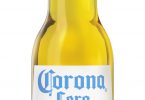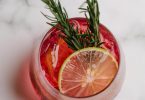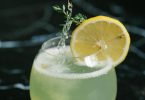The Business of Bars
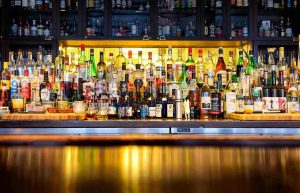
Key trends dominating the bar trade are quality, pub food, the change in venue style, the move towards ‘balanced choice’ by the consumer, the need to ‘make the moment’ and to seek out and explore new experiences as well as the need to celebrate events (preferably at the pub).
For several weeks now Diageo Ireland has been running a nationwide series of seminars for bar staff on the ‘Business of Bars’ and other topics aimed at improving profits in the licensed trade.
Recently, it was the turn of some Dublin-based bar staff to hear what Diageo’s Beer Consultant Padraig McLaughlin had to say about the ‘Business of Bars’
Padraig began by pointing out that the last 10 to 15 years had seen more change in the bar trade than ever before, with seismic shifts in legislation, lifestyles, the economy and in technology.
Key trends and your business
A question-and-answer session at the start of the presentation identified the key trends dominating the bar trade as being quality pub food, the change in venue style, the move towards ‘balanced choice’ by the consumer, the need to ‘make the moment’ and to seek out and explore new experiences as well as the need to celebrate events (preferably at the pub).
And amidst these special occasions/celebrations can be found significant sports events such as the Six Nations and horse racing festivals such as Cheltenham Race Week.
Padraig had heard of people taking a few days off work to follow Cheltenham on TV in their local, spending two or three whole days in the pub. Sure it was nearly as good as being there.
Sub-trends
Sub-trends pointing to more emphasis being put on a more balanced lifestyle include the move to NoLo alcohol products and Padriag recalled being in a Midlands hotel recently which had a selection of five non-alcoholic beers, a direct result of consumer demand for them, he said.
Indeed, unlike days of yore, today consumers are actively brand-calling their NoLo choices.
The trend towards ‘drinking less but better’ lies at the forefront of purchasing decisions by some 75% of today’s Millennials while socialising seems to be shifting to early evening get-togethers, he suggested.
Consumers want to know more about what they’re purchasing at the bar. Thus it’s important for staff to have knowledge of beer & food pairings, for example, or at least be able to offer a soundbite description for any particular beer being enquired about.
By referencing the Beer Flavour Map proffered to those attending the seminar, bar staff should soon be able to estimate the region of taste preference of customers seeking a suitable style of beer to order.
The importance of beer quality
Padraig highlighted the importance of serving good beer, pointing out that the on-trade is responsible for 77% of all beer sales by volume with a value of €2.7 billion.
Research had found that customers getting beer of good quality in a pub spend 25% more money and 25% more time in that bar while 80% of them visit the pub more and over 75% would tell more than nine friends about their experience, he explained.
On the other hand 40% of customers getting a poor quality beer would tend to spend less in the outlet while 20% would simply leave the pub. 40% of those experiencing poor quality beer would relate this to over seven friends. Apart from anything else, poor quality beer simply leads to more wastage.
75% of consumers have stated that quality is the Number One driver of choice, he emphasised.
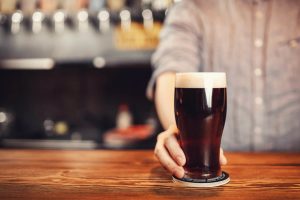
Quality is the Number One driver of beer choice.
Extra profit
Padraig also teased out the maths on just what it means for a pub if a regular orders another beer in the bar.
If they’re served a good pint costing around €4.50 they may consider having another.
If they did – and over the course of a nightly visit they bought an extra seven pints per week as a result – the bar would realise an extra €31.50 a week totalling €1,638 per year.
Now in a larger bar with five people serving that extra pint to five different regular customers some 35 extra pints would be sold amounting to €157.50 each week or €8,190 more a year.
To serve good quality beer, Diageo has the ‘7 Cs Framework for profit’ to help publicans remember the base to good beer.
Guinness’s ‘7 Cs’ Framework for profit
Guinness proposes a quality chain to avoid any problems that migt arise and enhance the sale of Guinness sale – the ‘7Cs’.
- Correct gas – should be a mixture of 75% nitrogen and 25% carbon dioxide
- Correct temperature – a ‘Bishops collar’ on a head means that the Guinness is too warm while a short head means that the stout’s too cold
- Clean beer lines – a ‘must have’
- Clean glassware – 95% of customers believe they can judge a pint of Guinness by its appearance. ‘Beer clean’ glassware can only help them in this
- Counter visibility – the brand should be clearly visible on the bar to the approaching consumer. 30% of consumers are undecided what they’re going to drink when they arrive in a bar and 90% of such consumers tend to take the bar staff’s recommendation.
- Consistent freshness – the ‘First In First Out’ rule
- Crafted presentation. Consumers expect to be able to enjoy watching the preparation of any drink, Guinness included – so the bar staff have to be able to show off their craft.
Research has also shown that 90% of consumers will buy another drink if the first one is well-served.
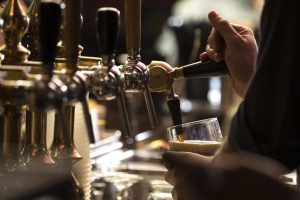
To serve good quality beer, Diageo has the ‘7 Cs Framework for profit’ to help publicans remember the base to good beer.
Essential guide to spirits
Padraig also reviewed the spirits market in the pub. Spirits comprise some 23% of on-trade sales by volume worth €796 million, with gin the rising star of the show at present although vodka still dominates the on-trade spirits market.
In general, spirits should be displayed under ‘core’, ‘excite’ and ‘must stock’ categories, he advised.
Whisk(e)y
Irish whiskey too offers an opportunity to upsell and a range of such whiskeys could be championed on the back bar along with their inclusion in bar menus and their promotion by bar staff.
The staff leaving the Landmark on this occasion might have found themselves somewhat more informed and perhaps a little more prepared to upsell these products the next time they were behind the counter.





